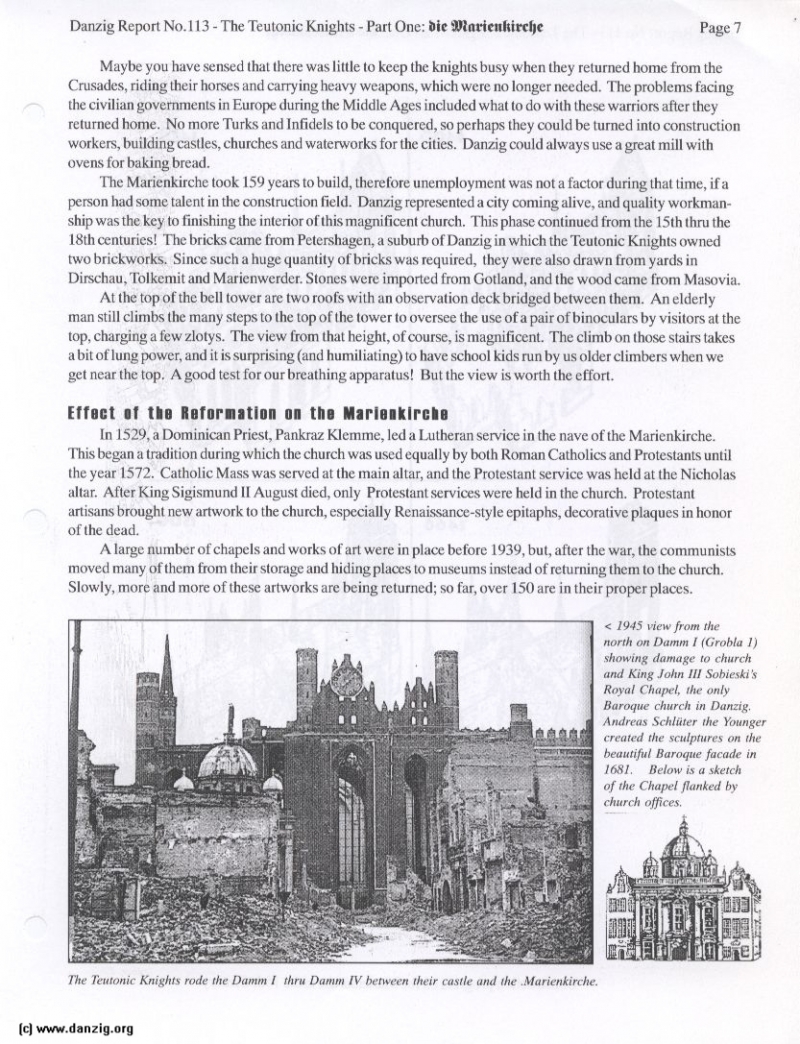
History of the builders of the Marienkirche
Maybe you have sensed that there was little to keep the knights busy when (hey returned home froni the Crusades, riding their horses and carrying heavy weapons, which were no longer needed. The problems facing the civilian governments in Europe during the Middle Ages included what to do with these warriors after they returned home. No more Turks and Infidels to be conquered, so perhaps they could he turned into construction workers, building castles, churches and waterworks for the cities. Danzig could always use a great mill with ovens for baking bread.
The Marienkirche took 159 years to build, therefore unemployment was not a factor during that time, if a person had some talent in the construction field. Danzig represented a city coming alive, and quality workmans hip was the key to linishing the interior of this magnificent church. This phase continued from the 15th thru the 18th centuries! The bricks came from Petershagen, a suburb of Danzig in which the Teutonic Knights owned two brickworks. Since such a huge quantity of bricks was required, they were also drawn from yards in Dirschau, Tolkemit and Marienwerder. Stones were imported from Gotland, and the wood came from Masovia.
At the top of the bell tower are two roofs with an observation deck bridged between them. An elderly man still climbs the many steps to the top of the tower to oversee the use of a pair of binoculars by visitors at the top, charging a few zlotys. The view from that height, of course, is magnificent. The climb on those stairs takes a bit of lung power, and it is surprising (and humiliating) to have school kids run by us older climbers when we get near the top. A good test for our breathing apparatus! But the view is worth the effort.
Effect of the Reformation on the Marienkirche
In 1529, a Dominican Priest, Pankraz Klemme, led a Lutheran service in the nave of the Marienkirche. This began a tradition during which the church was used equally by both Roman Catholics and Protestants until the year 1572. Catholic Mass was served at the maui altar, and the Protestant service was held at the Nicholas altar. After King Sigismund II August died, only Protestant services were held in the church. Protestant artisans brought new artwork to the church, especially Renaissance-style epitaphs, decorative plaques in honor of the dead.
A large number of chapels and works of art were in place before 1939, but, after the war, the communists moved many of them from their storage and hiding places to museums instead of returning them to the church. Slowly, more and more of these artworks are being returned: so far, over 150 are in their proper places.
Danzig Report Nr. 113 - October - November - December - 2001, Page 7.
Hits: 3190
Added: 30/07/2015
Copyright: 2024 Danzig.org

